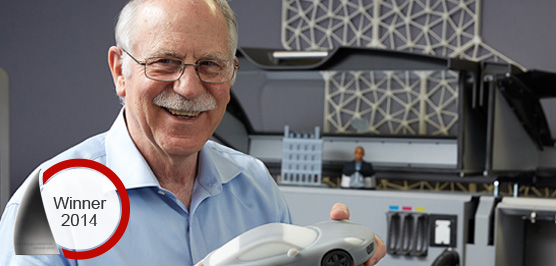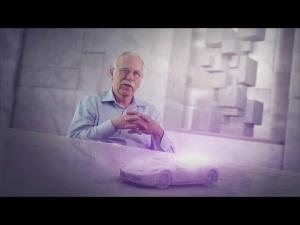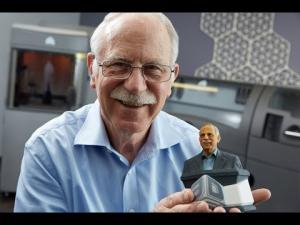Charles W. Hull
3D printing (stereolithography)
Winner of the European Inventor Award 2014 in the category Non-European countries
In the early 1980s, Charles W. Hull set out to improve the tedious process of creating small plastic parts for prototyping involved in testing new product designs. Only one year after he had developed the first model of his 3D printer, Hull applied for a patent for his invention: a machine that could perform in a matter of minutes what would normally take several weeks of moulding and casting.
Hull, who was then working at a company that used UV light to apply thin sheets of plastic veneers onto table tops, furniture and paper products, realised that if he was able to overlay thousands of these laminate layers on top of each other and etch their shape using UV light, he could form three-dimensional objects in nearly any conceivable form. Today stereolithography has become the state of the art for prototyping new models – and an industry in itself.
Societal benefit
Printers designed by Hull’s company 3D Systems have made their way into myriad industrial and commercial uses: Medical-technology companies rely on them to create models of patients’ jaws and facial structures; an automotive safety company uses the technology to design “intelligent” crash-test dummies; a watchmaker uses 3D Systems’ printers to evaluate designs before final production – and the list goes on. From aeroplane wings and architectural models to toys and electric bicycles, countless products and prototypes come to life faster and cheaper than ever before.
Economic benefit
3D Systems, founded in 1986, became a leader in the 3D printing industry, posting sales of about US $350 million in 2012. It is now listed on the NASDAQ stock exchange and employs more than 1000 people. The market for 3D printers and 3-D printing services was valued at US $2.2 billion in 2012 (a 29% increase from 2011). According to current estimates, the annual market value will increase to US $4 billion by 2025. TechNavio forecasts the global rapid-prototyping systems market to grow at a compound annual growth rate of 15.6% from 2011 until 2015.
Originally used for the rapid production of prototypes for form and fit testing, 3D printing is now transitioning towards the manufacture of final products – and the 3D printing landscape keeps evolving, as new uses for the technology are being discovered every day.
How it works
This information is sent to a stereolithograph apparatus, which contains a vat filled with UV-sensitive liquid photopolymer resin; a movable UV laser shines a high-intensity beam of light onto the vat and traces the complete shape of the cross-section of the object. After the laser has finished its outline, the first layer of polymer hardens. Depending on the size of the object to be produced, the process is then repeated several thousands of times, layer upon layer, until it is completed.
The inventor
Did you know?
Media gallery
Contact
European Inventor Award and Young Inventors Prize queries:
european-inventor@epo.org Subscribe to the European Inventor Award newsletterMedia-related queries:
Contact our Press team#InventorAward #YoungInventors










